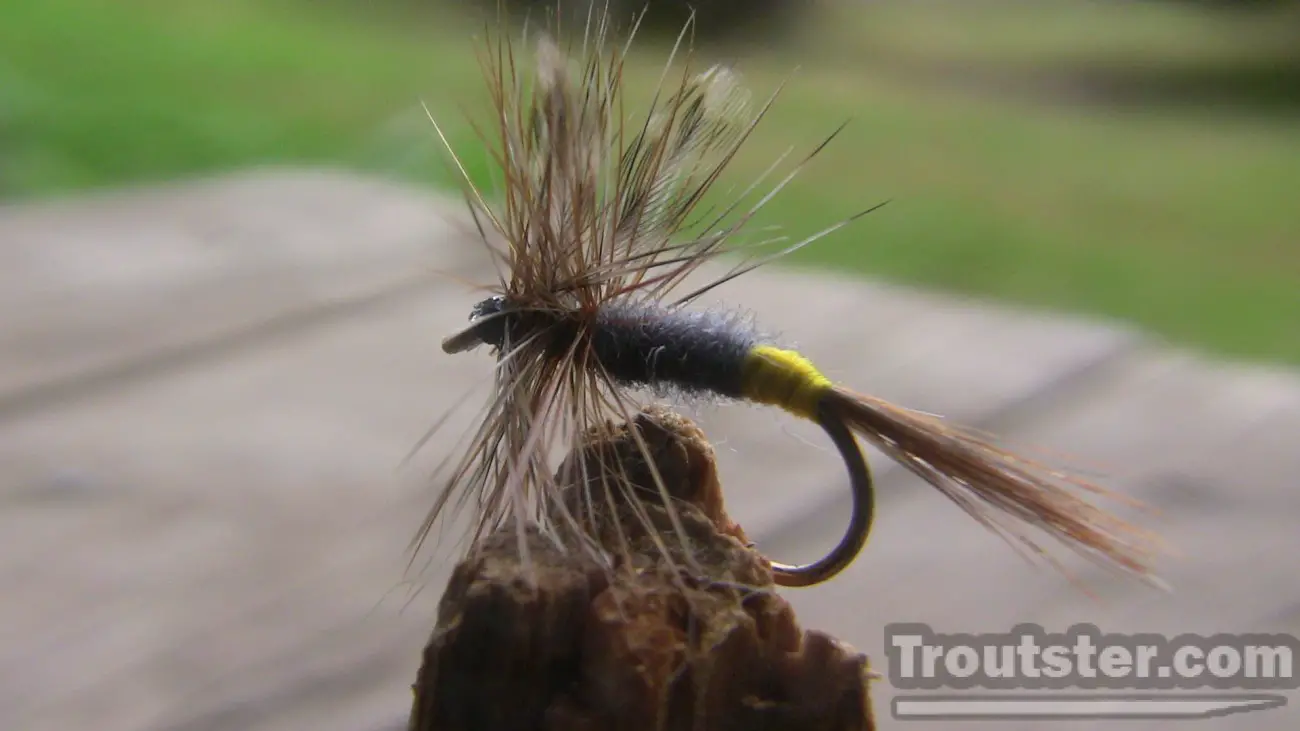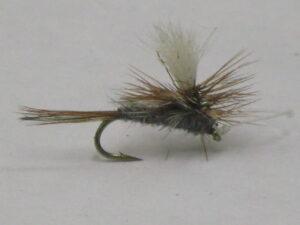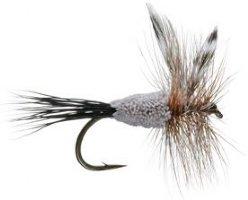This post was last updated on May 15th, 2015 at 03:54 pm

A Brief History of the Adams Dry Fly
Created in 1922 by a man named Leonard Halladay, the Adams dry fly was inspired by a fishing acquaintance named Charles Adams, for whom the fly is named after. Invented before there was a large movement to differentiate American style fly fishing from English, the Adams dry fly has withstood the test of time and is a basic component to many fly fisherman’s tackle.
Simple beginnings
Born in 1872, Mr. Halladay lived in Mayfield Michigan after his family migrated from New York during a boom in the lumber industry. The little town is situated Swainston Creek, which connected to the Boardman river. He began tying flies around the age of 17 and added to his local reputation as an expert fly fisherman.
With his wife, Halladay ran the local hotel that took in lumberjacks and tourists. As interest in the area for fishing picked up he began a guide and livery service for visitors. In 922 Charles Adams and his son took up at Arbutus Lake, which is a bit north of Mayfield. Avid fishermen, they enjoyed the Boardman River and were frequent fishing buddies with Halladay.
So the legend goes
Historians disagree on the exact happenstance that inspired Halladay to make the fly the way he did. Some say that Adam’s described what he wanted to Halladay, while others say he either presented pictures or an actual specimen. Whatever the inspiration was, the resulting fly was a big hit from then on. His friend came back to him the next day to praise how well it performed and to ask what the trout fly was called. Halladay figured since Adams was the first to use and had such success that the fly should be named after him.
For a while there was controversy over who the original designer was. Some debated that the credit should go to Adams if he did provide the plans, while others insist that it was Mr. Halladay’s work entirely. Mr. Adams son at one point made a note to a friend regarding the fly, citing that he was the one who designed it and for whom it was named after, but that Mr. Halladay was the first to fashion one. While the note added another bit of confusion for some, in the end Halladay insisted it was his design, and in fact was one that he had openly discussed with others in the community.
Evolution of the Adams dry fly anatomy
Regardless of its origin, the schematics began the same. It was comprised of a #12 or #14 dry fly hook, gray to black thread, two strands from a golden pheasant’s neck feather for the tail, narrow neck feathers from a Barred Plymouth Rock rooster for the wings, gray wool warn for the body, and the hackle was a mix of neck feathers from both Barred Plymouth Rock and Rhode Island Red roosters.
Halladay began tying and selling the Adams increasingly after its invention. The popularity of the fly began to rise over the years and it was slowly changed. At first the only difference in the original and modified version was a switch from wool to muskrat fur. While the switch did not alter the look, it made the fly more buoyant and easier to float.
Around the 1930s the Adams dry fly became influence by the Catskill guild’s style of tying. The wings of the fly went from being closer and angled forward over the head to more upright and apart. The body was also fashioned to be more streamlined and tapered. The last major change in the Adams dry fly came around the early 1940s to late 1930s. The tail was changed from golden pheasant to a mix of grizzly and hackle.
The importance of the Adams dry fly and Mr. Leonard Halladay
During his lifetime, Halladay is credited with contributing many flies that were widely used at the time. His most enduring though, is the Adams and the female version of the Adams. Both of which are still made and used today. People continue to make their own variations on the design, but there are not many fly fisherman that do not mention the Adams fly as a standard.
Halladay lived in a time when Americans had begun to develop their own style, and were breaking away from English traditions. The Catskill area of New York boasts to be the starting point for American fly fishing, and though Halladay was only a boy when he lived there before his family moved, he is proof of it being American fly fishing’s birthplace. His contributions to the sport and lifelong dedication to tying and fishing will be remembered as long the the fly is used. So far its been around for over eighty years with no sign of going



